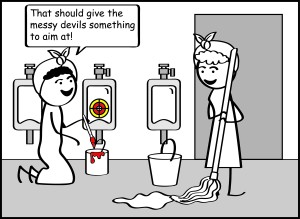 When I admit to some people that I don’t meditate, they can be taken aback, like “are you kidding, how can you live like that?” NYT’s blogger Adam Grant recently admitted to this and that it does not work for him (Can We End the Meditation Madness? Oct. 2015). He said, “I have nothing against it. I just happen to find it dreadfully boring.” Three cheers for Adam– because I do too!
When I admit to some people that I don’t meditate, they can be taken aback, like “are you kidding, how can you live like that?” NYT’s blogger Adam Grant recently admitted to this and that it does not work for him (Can We End the Meditation Madness? Oct. 2015). He said, “I have nothing against it. I just happen to find it dreadfully boring.” Three cheers for Adam– because I do too!
There are other ways to reduce anxiety, and stress and become more “mindful”– living in the present moment. We are creative and execute our creativity only in the present moment. People meditate to become more mindful and are more likely to focus their attention in the present after meditating. If it is not for you (or me), what are other techniques to get present, in order to get creative?
There is a universal growth process (UGP) embraced throughout the world in different traditions. The UGP I use interweaves five aspects or “5As” of awareness, acceptance, appreciation, action, and adherence. The 5As can be used to enhance your creativity. I learned this process during a master’s coaching certification process. I modify this UGP approach by framing it with the three centers of intelligence.
Mindfulness practices are sometimes belittled as navel-gazing and a waste of time. Nothing could be further from the truth. This is a proven tool. It de-stresses the mind and opens/prepares us to be more creative; we know this through brain imaging. It is practiced strategically in the business world. The US $131 billion internet company Google Inc. (2014) is very serious about mindfulness training for their employees. We’d be foolish to not leverage this technique. It’s not just for bald people in funny robes living in mountains, or small groups of New Age folks. We can ”practice awareness” for the goal of being confidently creative. We don’t hit a target that we don’t aim for!
By learning this process, you’ll be able to listen individually to each of your three centers of intelligence and gain their information. This helps us to consciously shift to their higher fruit—all by using self-observation. Learn more about this Growth Process in my book.
